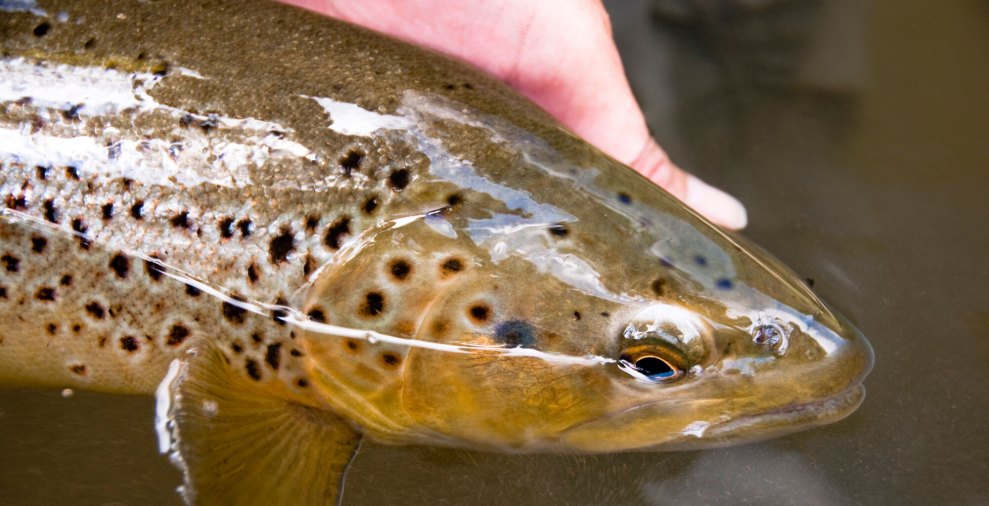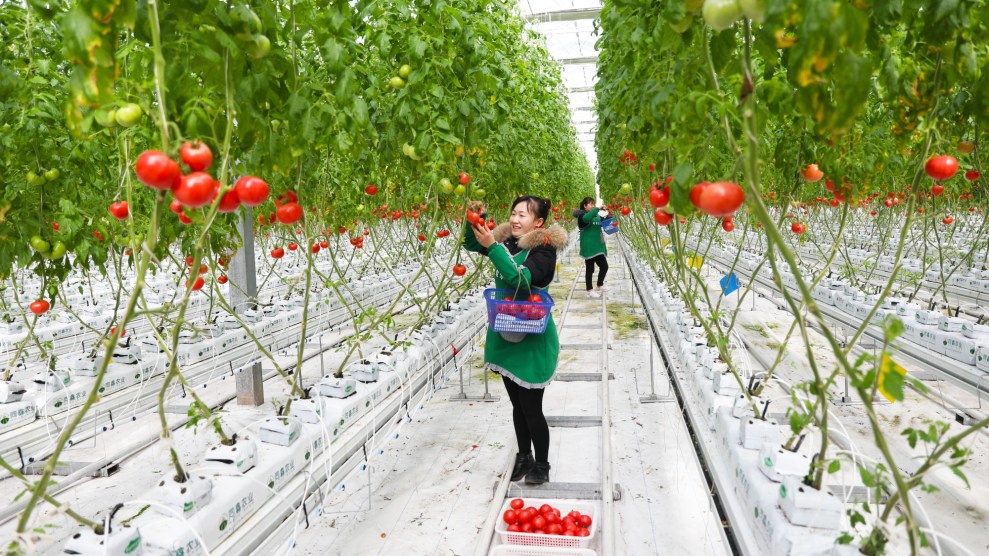
Brown trout showed signs of addiction and withdrawal when exposed to methamphetamine traces.georgeclerk/Getty Images
This story was originally published by the Guardian and is reproduced here as part of the Climate Desk collaboration.
From brown trout becoming “addicted” to methamphetamine to European perch losing their fear of predators due to depression medication, scientists warn that modern pharmaceutical and illegal drug pollution is becoming a growing threat to wildlife.
Drug exposure is causing significant, unexpected changes to some animals’ behavior and anatomy. Female starlings dosed with antidepressants such as Prozac at concentrations found in sewage waterways become less attractive to potential mates, with male birds behaving more aggressively and singing less to entice them than undosed counterparts.
The contraceptive pill has caused sex reversal in some fish populations—leading to a collapse in numbers and local extinction events as male fish reverted to female organs. Scientists have said that modern pharmaceutical waste is having significant consequences for wildlife exposed to discharges in their ecosystems and warned it could have unintended consequences for humans.
Michael Bertram, an assistant professor at the Swedish University of Agricultural Sciences, said: “Active pharmaceutical ingredients are found in waterways all around the globe, including in organisms that we might eat.”
He said evidence of the problem had grown over recent decades, and it was a global issue for biodiversity that deserved more attention.
“Drugs must be designed to not only be effective and safe, but also to have a reduced potential risk to wildlife .”
In a paper published on Wednesday in the journal Nature Sustainability, researchers said the pharmaceutical industry must urgently reform the design of drugs to make them greener.
“There are a few pathways for these chemicals to enter the environment,” Bertram, one of the paper’s authors, said. “If there is inadequate treatment of pharmaceuticals that are being released during drug production, that’s one way. Another is during use. When a human takes a pill, not all of that drug is broken down inside our bodies and so through our excrement, the effluent is released directly into the environment.”
Drugs such as caffeine, anti-anxiety medications, antidepressants, and antipsychotics were all entering ecosystems, Bertram said, as were illegal drugs such as cocaine and methamphetamine.
Bertram pointed to the notable example of diclofenac, an anti-inflammatory drug routinely given to cattle in south Asia at the time, that caused India’s vulture population to fall by more than 97 percent between 1992 and 2007. The country subsequently had a surge in rabies cases from dogs that were feeding on the cattle carcasses that were no longer being eaten by the birds.
Other examples include fathead minnows that remained anxious after they were exposed to low levels of caffeine, and antibiotic pollution that has an effect on microbes.
Alarmingly, it is the very same characteristic of pharmaceuticals that makes them effective in human and animal patients that also makes them particularly hazardous environmental pollutants: drugs are specifically designed to have biological effects at low doses.
A recent study that measured 61 different drugs from 104 countries from rivers in 1,052 locations found 43.5 percent of the sites had traces of at least one drug that were above safe levels for ecological health.
The researchers said active pharmaceutical ingredient (API) pollution was occurring against a backdrop of other pressures on biodiversity, including the climate crisis, habitat destruction and overconsumption.
They said the lifecycle of drug production could be reformed to curb their spillover on ecosystems, and pharmacists, physicians, nurses and vets should be trained in the potential environmental impact of medicines. They added that drugs could be designed to break down more easily after use and said wastewater treatment should be expanded to prevent API pollution entering the environment.
“Appreciating that patient access to pharmaceuticals will remain vital into the future, we urge drug designers and manufacturers, scientists and policymakers to recognise the growing environmental threat posed by APIs and to urgently prioritize the sustainable molecular design of greener drugs to prevent further environmental harm,” the paper said.
“Greener drugs reduce the potential for pollution throughout the entire cycle,” said Gorka Orive, a scientist and professor of pharmacy based at the University of the Basque Country, and an author of the study.
“Drugs must be designed to not only be effective and safe, but also to have a reduced potential risk to wildlife and human health when present in the environment,” he said.













